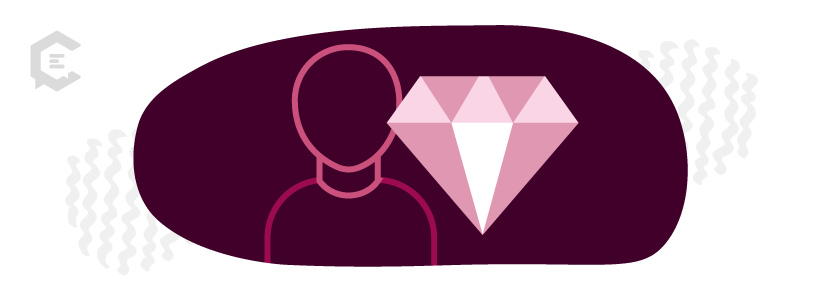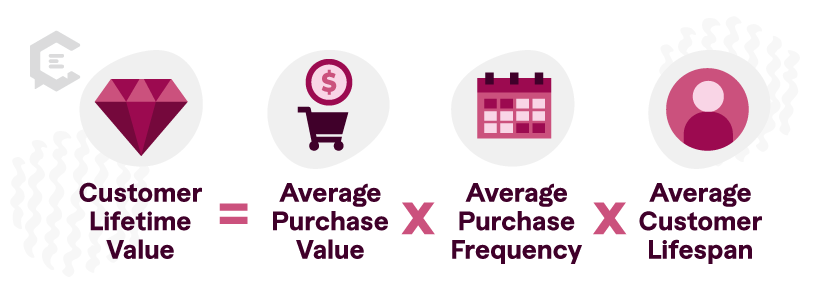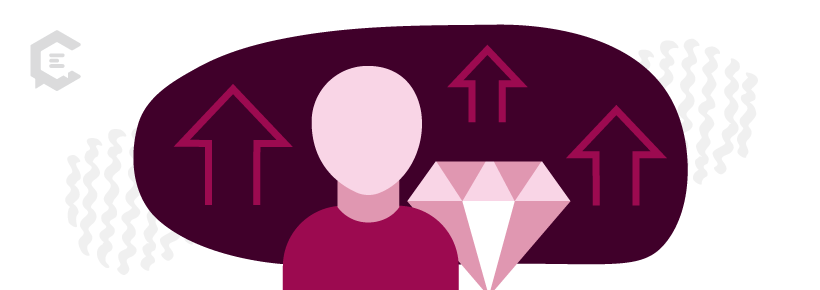What is customer lifetime value (CLV)?
Customer Lifetime Value (CLV) refers to the predicted net profit generated over a customer’s relationship with a business. Customer retention is a huge issue when it comes to doing business. But retaining ALL customers simply isn’t feasible, nor is it desirable. So, which customer should be better targeted when it comes to marketing efforts?
Enter the customer lifetime value concept.
CLV, sometimes known simply as “lifetime value,” is the total amount of money a customer is expected to spend on a business’s products or services as long as that individual or entity remains a customer. This value is comprised of their purchases, repeat transactions, upsells, cross-sells, and potential referrals.
Calculating CLV involves estimating the average revenue generated per customer over their entire lifespan and subtracting the associated costs, including marketing expenses, customer service, product fulfillment, and any other operational costs specific to that customer. The resulting value provides insights into the long-term financial impact of customer relationships.
Why is monitoring your CLV so important?
By understanding key metrics like total customer value (TCV) and CLV, businesses can make informed decisions regarding resource allocation, customer retention strategies, and content marketing investments. It helps identify high-value customer segments, which you can tailor content to meet that group’s specific needs.
CLV emphasizes the importance of fostering long-term customer relationships rather than solely focusing on initial conversions. By nurturing customer loyalty and satisfaction, businesses can increase CLV, drive customer advocacy, and better predict churn rates.
Your CLV data plays a pivotal role in your business’s long-term planning and scaling.
By understanding the future revenue potential of customers, businesses can forecast revenue projections, set realistic growth targets, and allocate resources effectively. When you make data-driven decisions about scaling, your growth becomes much more sustainable.
How do you calculate your CLV?
CLV operates on the idea that retaining interested, active customers is much easier than seeking new ones. It also operates under the concept that these interested, enthusiastic customers should be targeted — and hopefully retained — through various marketing efforts.
There are several approaches to calculating CLV, but a commonly used method is the following:
Calculate Average Purchase Value (APV)
This formula will help determine the average customer relationship duration with your business. This can be measured in months or years and is typically based on historical data or industry benchmarks.
Calculate Customer Lifetime Value (CLV): Multiply the APV by the APF and then by the ACL to calculate the estimated CLV.
APV = Total Revenue / Number of Unique Customers
Calculate Average Purchase Frequency (APF)
This formula measures the average number of purchases a customer makes within a specific timeframe. Divide the total number of purchases by the number of unique customers.
APF = Total Number of Purchases / Number of Unique Customers
Calculate Average Customer Lifespan (ACL)
Using this formula will help determine the average duration of a customer’s relationship with your business. This can be measured in months or years and is typically based on historical data or industry benchmarks.
Calculate Customer Lifetime Value (CLV): Multiply the APV by the APF and then by the ACL to calculate the estimated CLV.
CLV = APV x APF x ACL
It’s important to note that CLV calculations can be more complex depending on the specific business model and industry. Additional factors such as customer acquisition costs, retention rates, and discount rates may also be considered for a more accurate CLV estimation.
How Companies Can Boost Their CLV
Those wishing to improve their CLV should implement the following methods to build a loyal customer base.
Customer Segmentation
Not all customers are created equal. Directing focused efforts towards high-yielding and loyal customers will boost retention amongst those who already have established buy-in. You can strengthen customer relationships and increase CLV by addressing their unique needs and interests.
Brand loyalty boosts
Loyalty programs such as frequent shopper discounts or “thank you for buying” coupons incentivize repeat purchases and encourage customers to return again and again. If you reward loyal customers with exclusive offers, they will stay engaged with your brand and increase their lifetime spending over the long relationship.
Exceptional Customer Service
We have all had a poor customer service experience that has sent us packing. By investing in exceptional customer service throughout the customer journey, you can properly address inquiries and concerns before they become major problems.
Post-Purchase Communication
The customer journey is not over after they have made a purchase. After demonstrating buy-in, follow up to inform them about new products, updates, or exclusive offers. This ongoing engagement helps strengthen customer relationships and encourages repeat purchases.
Referral Programs
Two customers are better than one. Encourage loyal customers to refer your brand to their friends and colleagues by implementing referral programs. Incentivize these referrals with rewards or discounts for both the referrer and the referred customer, and you will retain new customer acquisitions that extend your CLV.
Ready to define, calculate and monitor your CLV, but uncertain of where to begin? Boost your CLV with better content by talking to a ClearVoice content specialist today!






